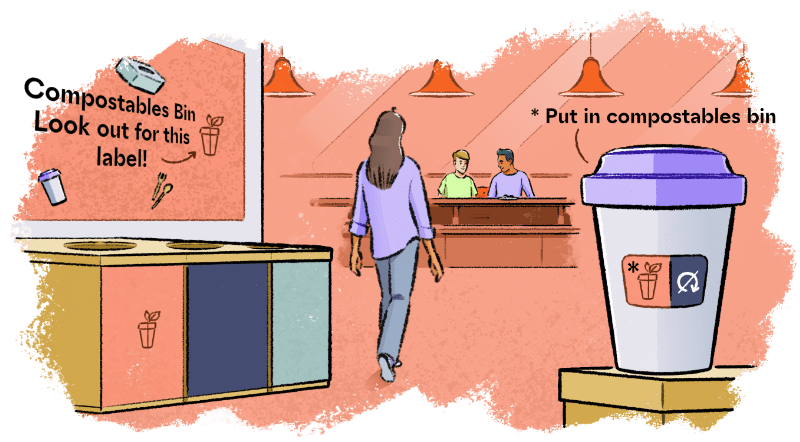What unsustainable behavior needs to change:
According to the Waste Resources Action Programme (WRAP) we waste a staggering amount of 88 million tons of food every year because of the expiration date. So, we are wasting food only because a print on the product says it has reached its end of shelf life- even if it was still good to consume.
The thing is: it’s often hard to say if food has gone bad or not. Of course there is the good old: “Look, smell, taste” but obviously this proves difficult for packaged food. It is hard to tell if food is safe to eat beyond the expiration date, unless you see some nasty mold on it. The process of decay is extremely abstract and people – when in doubt – prefer to play it safe and throw it away. This is not only valid for people in front of their fridge. For retailers, it has a significant cost effect. When a product nears it’s expiration date, it often will go on discount or is thrown out.
So one tool to reduce food waste would be something that makes the abstract more concrete. Some mechanism that extends the product and shelf life. If only the food or packaging could talk and stop this unsustainable behaviour.
The Green Nudge:
To address this challenge, salient feedback can be a great nudge to trigger action. Feedback coming from the product. More precisely: from the packaging.
London-based start-up Mimica came up with a game-changing, bio-inspired packaging innovation. Their Bump products are temperature-sensitive, dynamic expiry labels for food or beverages. The labels – coming a tag or cap – contain a gel filling that goes from smooth to bumpy at the same pace as the food inside deteriorates. This way they provides accurate, real-time feedback of the product’s freshness with a tactile interface.
Mimica founder Solveiga Pakštaitė was inspired by the banana skin transformation which changes its colour and texture as it ripens. One of nature’s great ways to provide feedback: green = don’t eat, yellow = eat, turning brown = hurry, it will go bad soon.


